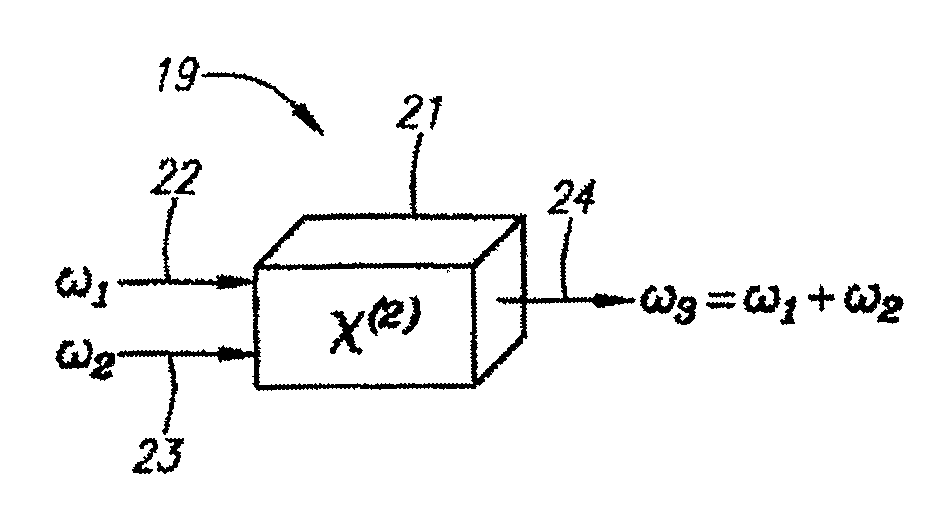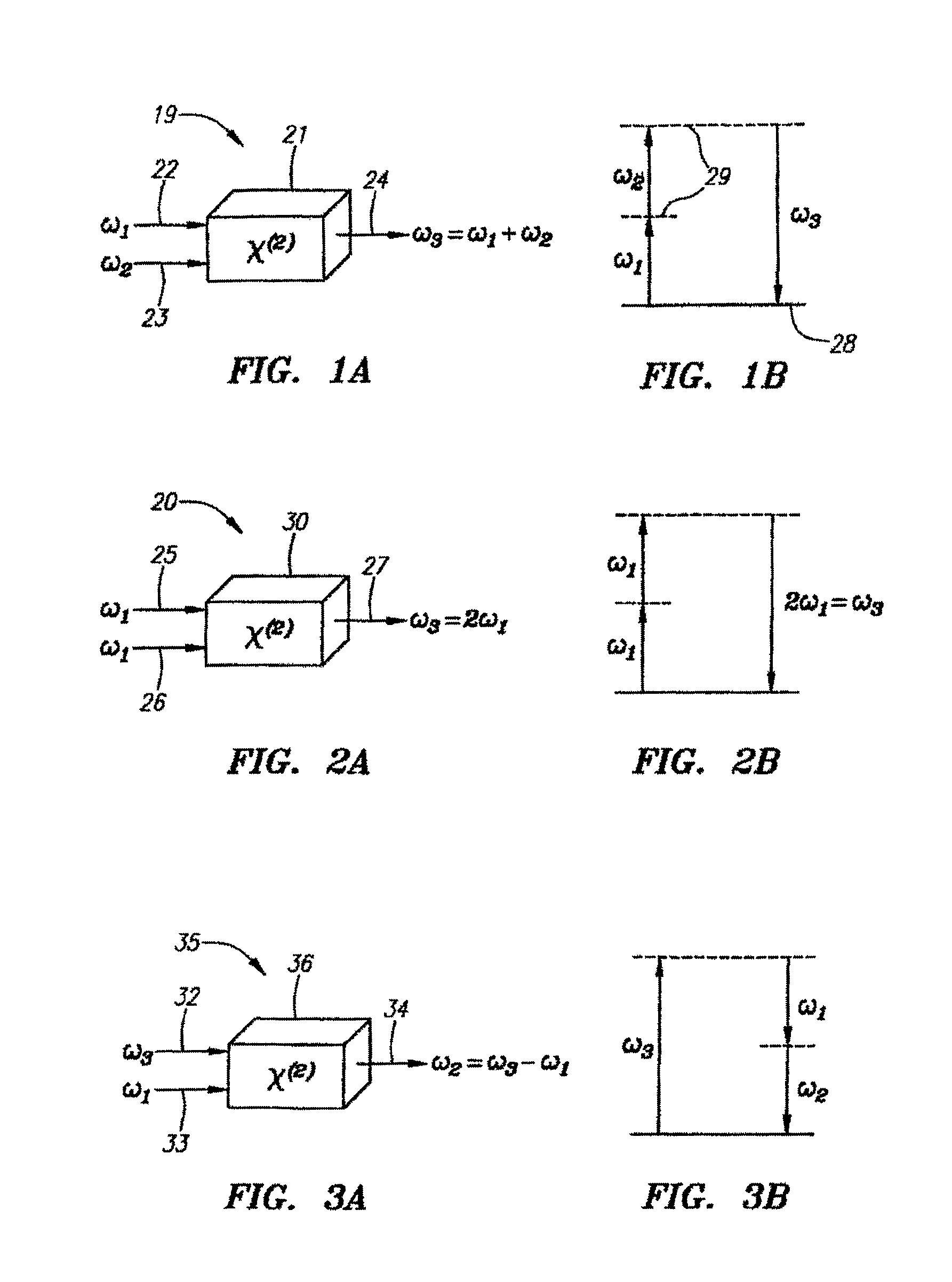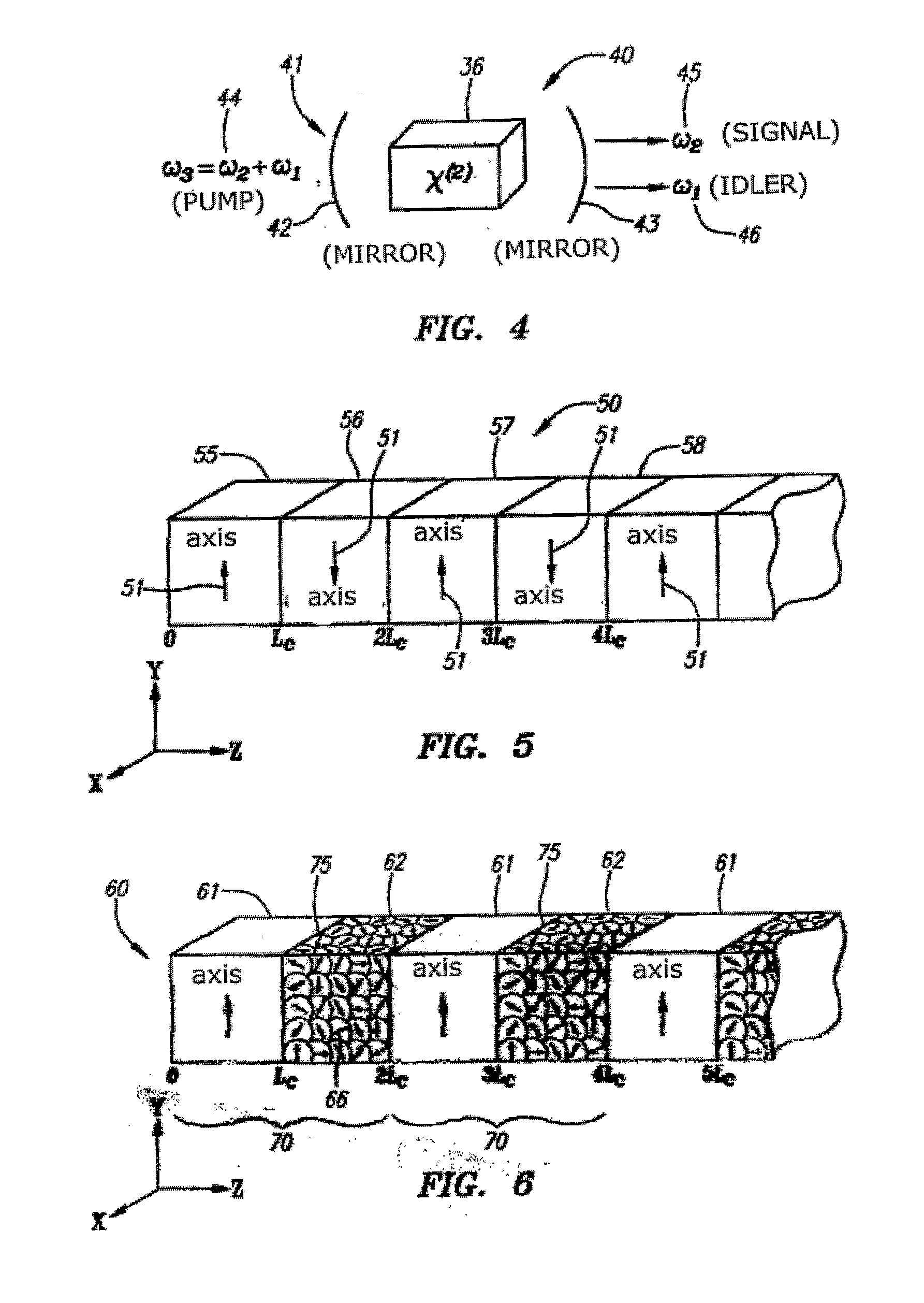Nonlinear optical device using noncentrosymmetric cubic materials for frequency conversion
a cubic material and optical device technology, applied in the field of nonlinear optical devices, can solve the problems of reducing the efficiency of the nonlinear process, affecting the frequency conversion efficiency of the optical device, etc., and avoiding the inversion of the crystalline axes
- Summary
- Abstract
- Description
- Claims
- Application Information
AI Technical Summary
Benefits of technology
Problems solved by technology
Method used
Image
Examples
Embodiment Construction
[0033]Four nonlinear optical devices, according to this invention, are schematically illustrated in FIGS. 1 to 4.
[0034]FIG. 1A is a schematic illustration of a nonlinear optical device (19), according to this invention. The nonlinear optical device (19) is an optical device for the generation of sum frequencies. The generation of sum frequency can be understood as a welding process in which two photons are welded together to produce a single photon with the added energy of both original photons. The nonlinear optical device (19) is comprised of a nonlinear optical medium (21). The nonlinear optical medium (21) consists of a nonlinear optical grating, such as the nonlinear optical grating (60) shown in FIG. 6, which is configured in this version to perform sum frequency generation in the interaction process of three light waves with frequencies ω1, ω2 and ω3. As noted in FIG. 1A, input light waves 22, 23, with frequencies ω1 and ω2, respectively, enter in the nonlinear optical medium...
PUM
| Property | Measurement | Unit |
|---|---|---|
| length | aaaaa | aaaaa |
| lengths | aaaaa | aaaaa |
| total length | aaaaa | aaaaa |
Abstract
Description
Claims
Application Information
 Login to View More
Login to View More - R&D
- Intellectual Property
- Life Sciences
- Materials
- Tech Scout
- Unparalleled Data Quality
- Higher Quality Content
- 60% Fewer Hallucinations
Browse by: Latest US Patents, China's latest patents, Technical Efficacy Thesaurus, Application Domain, Technology Topic, Popular Technical Reports.
© 2025 PatSnap. All rights reserved.Legal|Privacy policy|Modern Slavery Act Transparency Statement|Sitemap|About US| Contact US: help@patsnap.com



